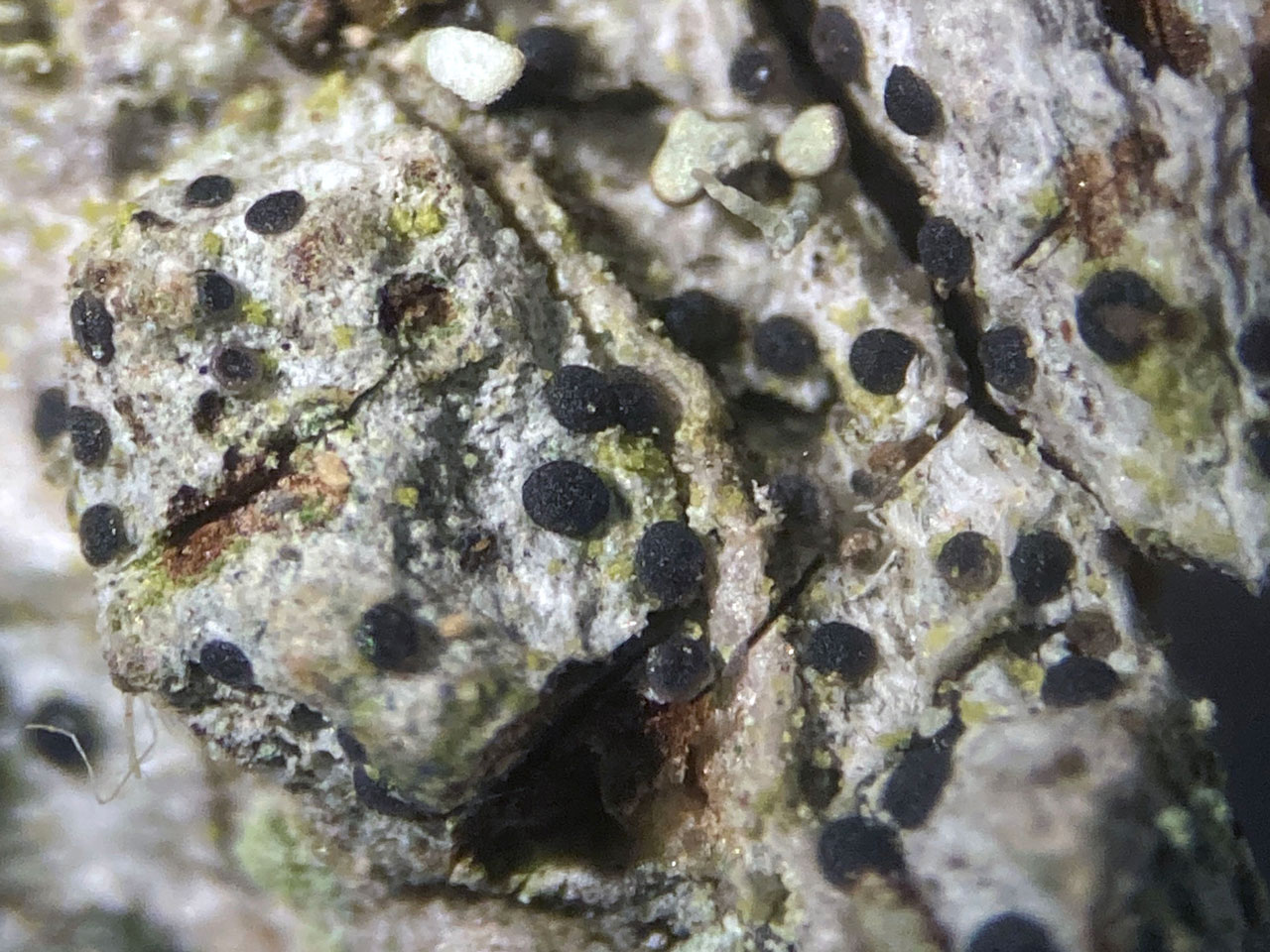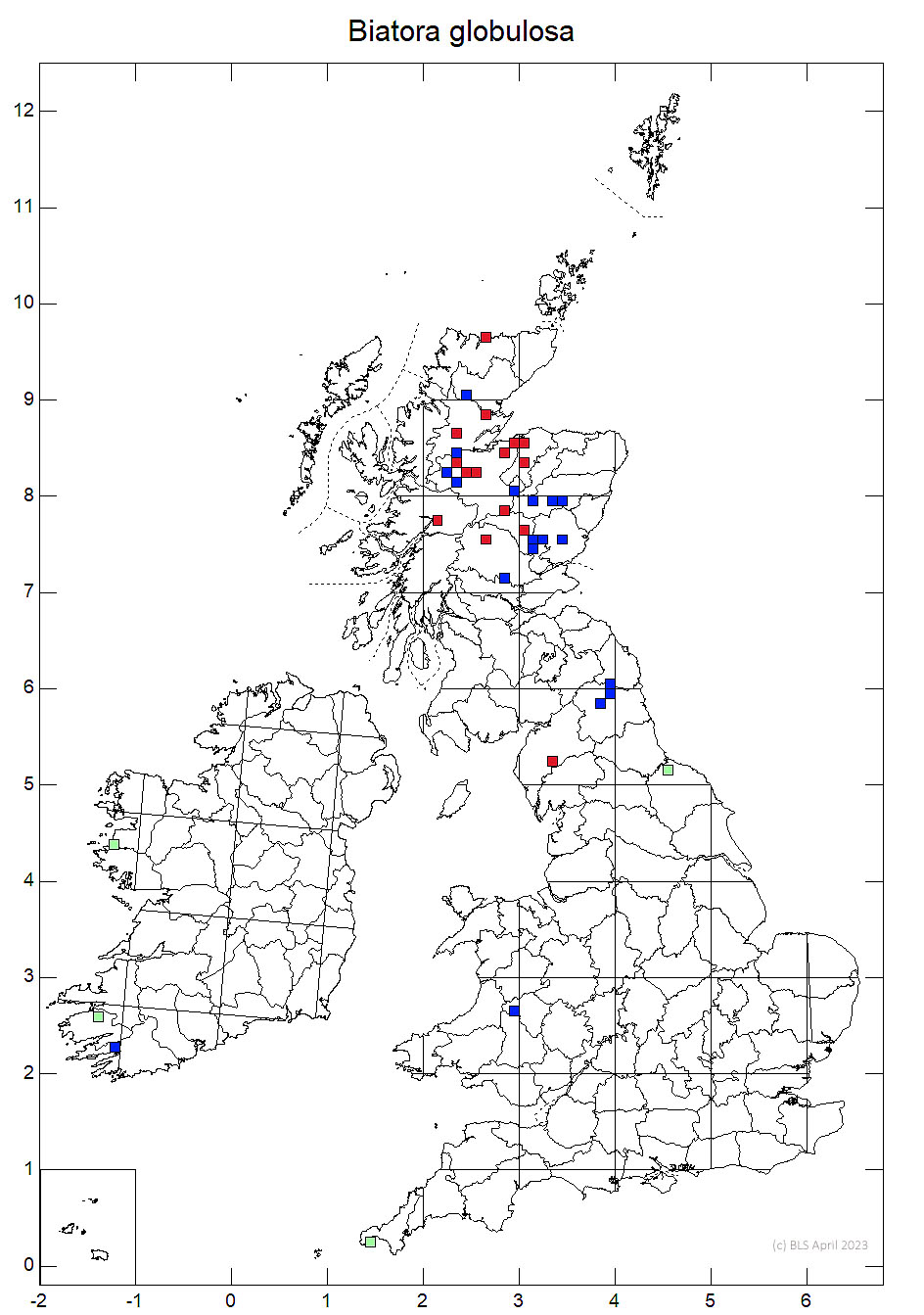Biatora globulosa
A rather scarce lichen of old trees mainly found in the eastern Highlands and very rarely beyond. The black convex to subglobose apothecia on a white thallus resembles Biatora beckhausii, with which it often grows, but the two lichens have very different spores and internal apothecia pigmentation.
Thallus effuse, pale white-fawn, thin, smooth to powdery, ± rimose or endoxylic; photobiont cells 7–14 (–18) μm diam., absent in the thalline margin. Apothecia sessile, numerous, 0.15–0.4 mm diam., at first flat, soon convex to subglobose, usually grey-brown or grey- to green-black, rarely pale in shade morphs, occasionally white-pruinose when young; proper margin indistinct from above, colourless except the upper edge which is often concolorous with the epithecium, the hyphae coherent in K, lumina ellipsoidal, 2–4 μm diam.; epithecium mostly slate-grey to dark olive-green, K+ green intensifying, N+ red; hymenium 30–40 μm tall, colourless; hypothecium colourless; paraphyses 1.2–2 μm diam., unbranched or forked above; the apical one or two cells often grey- or green-walled and swollen to ca 6 μm diam. Ascospores 7–12 (–16) × 2–2.5 μm, 0- to 1-septate, cylindrical to cylindric-fusiform. Pycnidia inconspicuous, partly immersed, 40–100 μm diam., black; the wall dark green; conidiogenous cells in a single layer, short-ampulliform; conidia of two types (a) cylindrical or ± curved, 3.5–5 (–6) × 0.5–0.7 μm (commoner), or (b) ellipsoidal, 2–2.8 × 1–1.5 μm; the two types not in the same pycnidium.
The usually black discs and apothecia lacking photobiont cells distinguish this species from Lecania chlorotiza and L. cyrtellina. It is often difficult to distinguish in the field from Biatora beckhausii, with which it often grows.
On rough bark or lignum of Quercus and Alnus trunks in woodlands or other sheltered situations; local. Scotland (C. & E. Highlands).

Rare in N.E. England, one record in central Wales.
A sub-oceanic species restricted to the east of the county where old woodlands are scarce
Britain: Near Threatened
Wales: Critically Endangered
Scotland: Priority Taxon for Biodiversity in Scotland
Cannon, P., Ekman, S., Kistenich, S., LaGreca, S., Printzen, C., Timdal, E., Aptroot, A., Coppins, B., Fletcher, A., Sanderson, N. & Simkin, J. (2021). Lecanorales: Ramalinaceae, including the genera Bacidia, Bacidina, Bellicidia, Biatora, Bibbya, Bilimbia, Cliostomum, Kiliasia, Lecania, Megalaria, Mycobilimbia, Phyllopsora, Ramalina, Scutula, Thalloidima, Toninia, Toniniopsis and Tylothallia. Revisions of British and Irish Lichens 11: 1-82. Link
Text by Neil A Sanderson based on Cannon et al (2021)

